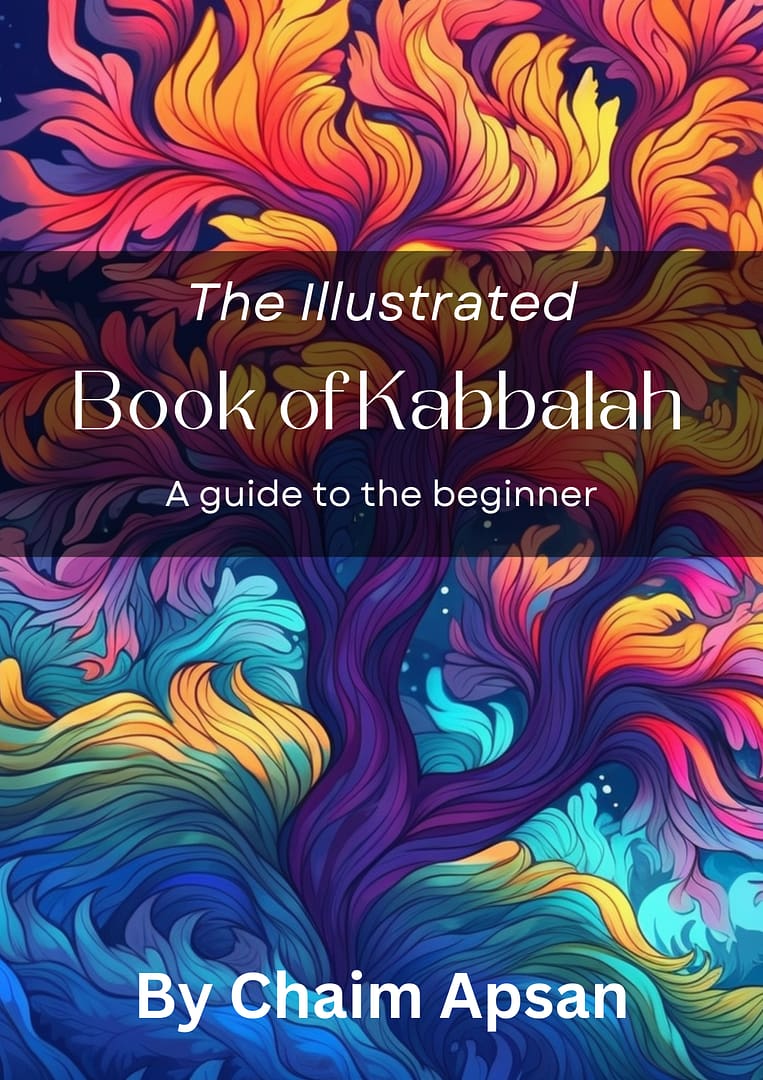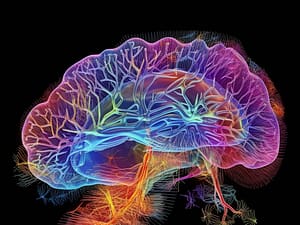The Cave of Machpelah (“double-floored cave” or Me’arat HaMachpela in Hebrew) occupies a very special place in Kabbalah
This location has long been a focal point for pilgrimages by both Jews and non-Jews since the establishment of the children of Israel in the Holy Land. The Cave of Machpela itself is more compact than its external appearance suggests. The current stone structure was constructed by King Herod approximately 200 years prior to the destruction of the Second Holy Temple.
The earliest recorded instance of prayer at this site dates back to when the 12 spies were dispatched to survey the Land of Canaan. Calev, anticipating the malevolent intentions of his fellow spies (excluding Joshua), prayed at this site for deliverance. Furthermore, our sages have identified that four sacred couples are interred here: Adam and Eve, Avraham and Sarah, Yitzhak and Rivka, and Yaakov and Leah.
With the understanding that the presence of Tzadikim in their resting places enhances the efficacy of tefilot (prayers), allowing them to ascend more swiftly, the significance and spiritual potency of the Cave of Machpelah becomes more apparent.

Let’s explore some of the Cave of Machpela’s Kabbalistic secrets from Sefer Chesed L’Avraham (Maayan 3, Nahar 13) by the Mekubal R’ Avraham Azulai
Explaining the secret of Jerusalem and the other holy places in the Land of Israel
Understand that the minor numerical value of Jerusalem is nineteen (19) [this is done by summing all the digits from the final Gematria]. Similarly, the minor numerical value of the Sephirah of Malkhut (kingdom) is also nineteen. Shechem, representing the mystical essence of Yosef HaTzaddik, who aligns with the Sephirah Yesod, was thus granted to Yosef and his lineage, as his characteristic is Yesod.
[The minor numerical value of Tveria (Tiberias) is also nineteen.]
The Sephirah of Hod (Splendor) including the count of its three letters plus one for the word itself, equals the minor numerical value of nineteen (19). Tveria’s name suggests it is “the center of the land” (referenced in Massechet Megilah 6A), symbolizing Malkhut, with Tveria itself representing Hod.
Breaking down the word Tveria, the minor numerical value of Tver is thirteen (13), drawing strength from the thirteen supernal attributes of mercy. [Tl. note: The rest of the word is Yod and Heh, which is the well-known name of Hashem יה.]
Tzfat corresponds to the Sefirah Netzah (victory or eternity), with a minor numerical value of twenty-two (22), including one for the word itself [Tl. Note: which is an accepted practice in Gematria]. The minor numerical value of Tzfat (צפת – 570, minor – 3) aligns with that of the holy Name Ehyeh (EHYH – 21, minor – 3).
This indicates that the inhabitants of Tzfat experience the divine interaction through the thirteen attributes of mercy emanating from the Sephirah of Keter. Ehyeh, associated with Keter, makes Tzfat a city of refuge for safeguarding souls. Tzfat’s minor numerical value is 21, and adding one for the word itself totals 22, mirroring the 22 letters of the Torah.
This implies that Tzfat is ideally suited as a place for uncovering the deep mysteries of the Torah, attributed to its unparalleled pure air in Israel. The numerical value of the Sephirah of Netzah (נצח) is 148, the same as “kemach” (flour), revealing the wisdom behind the Sages’ words, “if there is no flour, there is no Torah” (Avot 3:17).
Meron is associated with the Sefirah of Tiferet. In Aramaic, “sheep” translates to “meroni”, a term closely related to “maran” (lord), as in “Lord of Heaven”, a title often linked to Tiferet (Tl. Note: which is the Partzuf of Zeir Anpin). This connection is echoed in Ezekiel 34:31, where God refers to Israel as “my sheep, the sheep that I shepherd, mankind you are.” The term “maran”, representing Tiferet, has a minor numerical value equivalent to “Emet” (Truth, Gematria 441), which is 9. Adding three, one for each letter, plus one for the word itself, totals 13. This alludes to the 13 attributes of mercy, as previously discussed.
It’s widely recognized that the cave of Machpelah in Hebron, the resting place of the Patriarchs, serves as the gateway to the subterranean Garden of Eden. This is suggested in the Biblical account of Abraham’s purchase of the cave (Gen. 23:16), where he pays in “o’vair l’so’chehr” (negotiable currency). The numerical value of these words equals that of “orach l’gan” (the path to the Garden).

The same numerical value applies to the word “chatzer” (courtyard), implying that the cave is to the Garden of Eden what a courtyard is to a house. The phrase “o’vair l’so’chehr” has a numerical value of 570, symbolizing the belief among Hebron residents that upon death and burial, their souls will immediately and effortlessly enter the subterranean Garden of Eden.
The term “teka” (to insert) is mentioned twice in the Torah. Its first appearance is in Bereishit 31:25, where it’s stated, “and Yaacov had pitched (teka) his tent on the mount.” The continuation of this verse describes “and Lavan with his brethren, pitched his tent on the mount of Gil’ad.” The phrase “Yaacov had pitched (teka) his tent” symbolizes his wife.
The reference to “on the mount” is an allusion to the Cave of Machpelah, depicted as two mountains, one atop the other, with two caves beneath the lower mountain and another two in the upper. The numerical value of “teka” is equivalent to “o’vair l’so’chehr”, signifying the cave of Machpelah as the gateway to the Garden of Eden. Yaacov, in his deep devotion, prayed fervently to God for the privilege of being interred in the cave of Machpelah alongside his wife, a destiny believed to have been predetermined since Creation.
This narrative also suggests that Tzfat is predestined to be the place for uncovering the Torah’s profound secrets, favored for its unparalleled purity of air within Israel. The numerical value of Netzah (the sefirah) being 148, identical to “kemach” (flour), unveils the hidden meaning behind the Sages’ teaching, “if there is no flour, there is no Torah” (Avot 3:17).
The verse “and Lavan along with his brethren, pitched his tent” intimates that Lavan, through dark magic, sought to sever Yaacov from this world, preventing his burial in the cave of Machpelah. Lavan’s objective was to murder Yaacov, “along with his brethren,” referring to Esau and Yishmael, in order to claim the burial site and control access to the passageway to the Garden of Eden. This desire stemmed from the understanding of Yishmael, his sons, and the children of Keturah, as well as Esau and his followers, about their shared lineage with their forefathers Avraham and Yitzchak, respectively.
If, heaven forbid, our forefather Yaacov, peace be upon him, had not been interred in the Cave of Machpelah, then no Jew would have been able to pass through that route to the Garden of Eden. The way would be obstructed by idolatrous nations allied with Yishmael and Esau, who, due to their connection to Avraham and Yitzchak already buried in the Machpelah cave, would gain access and control over this passageway.
This concept is echoed in the Passover Hagadah, referencing the Sages of blessed memory, where it is stated that Lavan sought to destroy everything, as indicated in Devarim 26:5, “an Aramean nomad was our father.” Similarly, when Samael wrestled with Jacob and “touched (teka) the hollow of his thigh” (Bereishit 32:26), his aim was to mar Yaacov, preventing him from being laid to rest in the cave alongside Avraham and Yitzchak.
Instead, Samael intended for Esau and his wife to occupy that burial space. Thankfully, this did not transpire, as the Almighty immediately healed Yaacov. Our holy Sages, referring to Shabbat 33b, mention that Yaacov returned to his father Yitzchak “complete,” implying physically unblemished. God, in His grace and abundant mercy, foiled Samael’s malevolent plans and ensured Yaacov’s placement in the cave, a site of faith, thereby securing for his descendants the path to the Garden of Eden.
The city of Tzfat also shares the numerical value of 570, identical to ‘teka’. This hints at a unique advantage for those residing in Tzfat over any other city in Israel. Given its high elevation and exceptionally pure, refined air, it is believed that anyone who passes away and is buried in Tzfat will have their soul swiftly journey to the Cave of Machpela, from where it can then proceed to the subterranean Garden of Eden.
The profound significance of this connection needs no further elaboration.
Ad Kan from the Chesed L’Avraham.

Hebron and the Cave of Machpela
As we saw, the Cave of Machpelah holds a significant position in Kabbalah, notably as a passage to the Garden of Eden, as noted in Yalkut Reuveni with reference to the Zohar Chadash. This underscores its incredibly deep spiritual importance.
To summarize, in the context of Kabbalistic teachings on Gilgulim (reincarnation) and the four foundational elements—Earth, Wind, Water, and Fire—each element is linked to a holy city in Israel.
- Jerusalem symbolizes Fire
- Tveria represents Water
- Tzfat embodies Wind
- Hevron, housing the Cave of Machpelah, signifies Earth.
These cities are regarded as potent spiritual channels for meditation and prayer.
In Kabbalistic literature, the Cave of Machpela is also connected with the attribute of Kingship (Malkhut) and is associated with the Divine Name of B’an (Beit + Nun, with a Gematria value of 52). This name is a Milui (expansion) of the Tetragrammaton (YHVH) and features four “double” letters (הה|וו|הה|יוד), correlating with the four holy couples interred there. Notably, the Yod of the name is composed of י (10), equaling ו (6) + ד (4), suggesting that its first letter equals the sum of the two that follow. So it’s really a “double” named name, like the cave.
According to the Midrash Talpiot, entering the Cave of Machpela was once fatal, with intruders being burned alive. This situation persisted until Avraham Avinu acquired the cave from Efron. There’s a Midrash that reveals that the cave connects to higher realms, and it is a pathway every soul traverses from the underground to reach its afterlife destiny, as taught by the Megale Amukot as well.
The Zohar further elaborates that Efron was the Ministering Angel of Earth and a formidable Klipah (Shell, representing the Evil Side). Had he realized the true significance of the cave, he would not have sold it to Avraham Avinu. This sale, therefore, represents a pivotal moment in Kabbalistic history, transferring control of a crucial spiritual gateway from a potentially malevolent force to our Holy patriarch Avraham.
A very famous story is told about the Mekubal HaRav Avraham Azulai (great grandfather of the Chida), called the “Chessed L’Avraham” after his deep work which teaches about many occult secrets of life after death, spirits and the passages we just saw above.
About 300 years ago, under the Turkish rule in Jerusalem, an incident occurred at the Cave of Machpela, which is deeply embedded in Jewish tradition and mystical teachings.
The tale recounts how the Turkish sultan, visiting the Me’arat HaMachpelah, accidentally dropped his sword into the hole leading to the lower caves. Attempts by his guards to retrieve it resulted in tragedy, with each guard screaming horrifically before being pulled out dead. In a desperate bid, the sultan decreed that the Jewish community must produce someone to retrieve the sword, failing which they would face dire consequences.
Amidst prayers and fasting, the Chesed L’Avraham bravely volunteered for this perilous task. According to legend, he encountered the patriarchs Avraham, Yitzhak, and Yaakov in the caves, and remarkably, he passed away just seven days after this mystical experience.

An intriguing aspect of this story is the lesser-known detail about an additional person buried in the Me’arat HaMachpelah; The Gemara in Sotah 13 narrates an episode during Yaakov Avinu’s burial. The wicked Esav contested his burial spot, claiming he had only sold his birthright but not his burial rights. Amidst the ensuing dispute, Chushim, the son of Dan, cut Esav’s head which rolled down into the cave on Yitzhak’s chest.
Some say this is because Esav had sekhel (intellect) that rivaled Yaakov’s, however he choose to use it for evil. Because of this only his head merited to be buried there.
This episode with Chushim is often cited in rabbinical teachings to illustrate the importance of resolute action against the Yetzer HaRah (Evil Inclination), suggesting that direct confrontation without engagement in dialogue is the most effective strategy. Chushim’s decisiveness was symbolically rewarded, as reflected in the substantial numbers of his descendants during the tribe census in the desert, despite being Dan’s only child. That was an awesome miracle from Hashem.
Clearly, the Cave of Machpela holds even more secrets, and this narrative, blending historical events with mystical elements, encapsulates many key ideas of Kabbalistic thought, offering deep Mussar on Emunah (faith) and courage.













